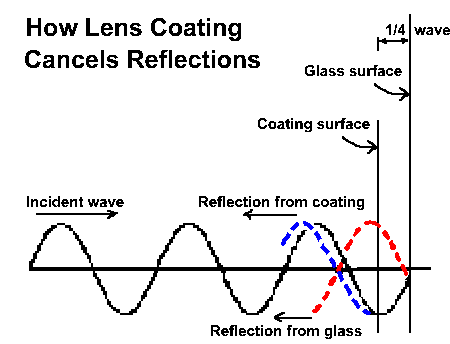Sayeth the ever-wonderful Wikipedia entry:
Many coatings consist of transparent thin film structures with alternating layers of contrasting refractive index. Layer thicknesses are chosen to produce destructive interference in the beams reflected from the interfaces, and constructive interference in the corresponding transmitted beams. This makes the structure's performance change with wavelength and incident angle, so that color effects often appear at oblique angles. A wavelength range must be specified when designing or ordering such coatings, but good performance can often be achieved for a relatively wide range of frequencies: usually a choice of IR, visible, or UV is offered.
Interference-based coatings were invented in November 1935 by Alexander Smakula, who was working for the Carl Zeiss optics company.
AR coatings are most often seen in more expensive watches, though independents like Lum-Tec are bringing to the less expensive watches. It can be applied to the inside, outside or both. Dual coatings work best, but can be scratched as they are less durable than the underlying Sapphire crystal.
Exceptions exist, such as the super-hard coatings used by Sinn, but that's still rare.
Here's a wonderful comparison shot:
(Image credit: Muddy250 on WUS)
Plain sapphire on the left, dual inner/outer coated on the right. Dramatic, no? You can barely see the window panes on the right.
Technically, the coatings are typically one layer, what's called a 'quarter wavelength' layer. This page has a fantastic tutorial with this diagram:
(Image credit: http://rick_oleson.tripod.com/index-166.html)
Read the whole page for a very nice explanation! From it, I infer that the updated less-colorful coating on the Planet Ocean went from single to multilayer... interesting.
Sides
AR coatings can be applied to
- Inside the crystal
- Outside the crystal
- Both
The best is multilayer, inside and out, but as noted above an external coating can be damaged.

